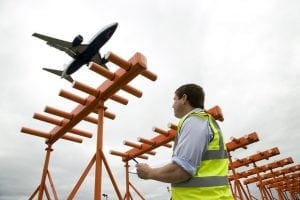
Photo: NATS
NATS Holding Ltd.’s 2017 fiscal year ended March 31, and the organization showed a 182.7% increase in profit before tax, compared to the previous year. The financial report also showed an increase of 2.4% in revenue, compared to the previous year.
“I am pleased with our performance. We safely handled 7.6% more flights than 2016. This was the most rapid growth in a decade and much higher than the CAA’s forecast for the current regulatory period (RP2),” said Martin Rolfe, NATS’ CEO. “While customers benefited from our real price reductions last year, the related reductions in revenue to the company were more than offset by additional revenue from the increase in the number of flights. Overall, our profit before tax at [~$163] was [~$106] better, mainly reflecting a reduced goodwill impairment charge.”
By the end of fiscal year 2017, NATS had garnered £919.3 million (~$1.04 billion) in revenue, and £125.5 million (~$142.6 million) in profit before tax. In fiscal year 2017, NATS handled 2.45 million flights in fiscal year 2016. Average en route delay per flight increased to 10.9 seconds from 4.3 in fiscal year 2016. This, NATS said, partly reflects traffic in higher-than-expected levels. Airlines were able to save 55,900 tons of CO2 emissions. Other highlights from fiscal year 2017 included implementation of iTEC4 — a new flight data processor into Prestwick upper airspace — and live trials of electronic flights strips by terminal control (TC) operation. NATS also highlighted that in April, it invested in Searidge Technologies, which provides technology for remote tower services.
NATS Chairman Dr. Paul Golby said that during the two years of RP2, the organization has controlled more flights than expected.
“Following changes in the business environment and industry developments in technology, we revised our investment plan to accelerate the deployment of technology necessary for the U.K.’s contribution to a Single European Sky,” he said. “This will provide more capacity to meet ever growing demand, particularly when combined with the essential and overdue modernization of airspace that we expect to form part of the U.K. government’s aviation strategy.”
Click here to view the full report.